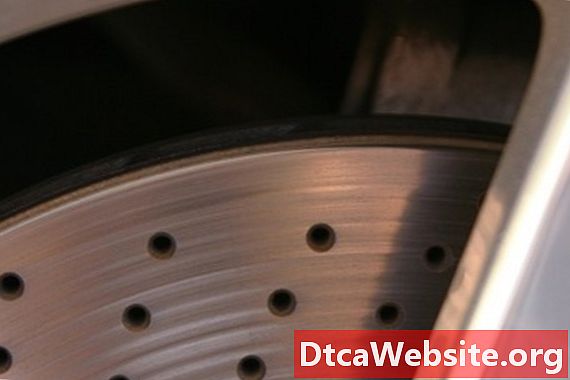
Contenu
- Trouble Shoot
- Step 1
- Step 2
- Step 3
- Step 4
- Step 5
- Step 6
- Step 7
- Step 8
- Assisted help
- Step 1
- Step 2
- Step 3
- Step 4
- Step 5
- Tips
- Warnings
- Items you will need

Brake hydraulics is the process of brake fluid under pressure applying force to your brake system. Bleeding the brakes allows you to remove all air from the brake fluid system to allow the fluid to build pressure again. This will ensure a good solid brake pedal when attempting to brake and will make certain that your brakes function properly. If air gets into your brake system it will cause a soft or spongy brake pedal. Brake bleeding works by using your brake pedal to create pressure in the brake system. When the bleeder screw is opened it allows pressurized fluid and trapped air to escape from system.
Trouble Shoot
Step 1
Check bleeder screws.
Step 2
Remove master cylinder cap, have assistant pump brakes to confirm that there are no signs of air bubbles in the reservoir.
Step 3
Check brake lines to ensure that there are no leaks. Also look for leaking hoses or wet areas which would cause fluid to leak out before reaching your brake bleeder screws, causing a bleed screw to not bleed.
Step 4
Clean out bleeder holes on brake calipers and wheel cylinders.
Step 5
Check around the master cylinder and brake booster for leaking fluid.
Step 6
Remove the master cylinder cap and ensure rubber grommet is still in good condition.
Step 7
Clean bleeder screws by pushing wire or small brush through the hole few times and then wiping clean with a soft lint free cloth.
Step 8
Blow air through bleeder screws to check for blockage, a can of compressed air would be a useful tool to have at this point, although not necessary.
Check to ensure master cylinder is full of brake fluid.
Assisted help
Step 1
Instruct your assistant to pump the brake pedal several times.
Step 2
Instruct your partner to hold the brake pedal down.
Step 3
Open brake bleeder screw furthest from master cylinder ½ turn to allow fluid and air to escape.
Step 4
Close bleeder screw and have partner release pedal.
Step 5
Repeat steps on all four wheels until air is no longer visible. Check your master cylinder reservoir constantly to ensure enough fluid is present during bleeding process.
Check your master cylinder reservoir constantly to ensure enough fluid is present during bleeding process, it should not get more than half empty.
Tips
- Drizzle oil on the bolts the day before you attempt this to help loosen them.
- When bleeding brakes one method that can be used is to install a hose to bleeder screw and run to clear jar filled partially with brake fluid. Bleed with hose in fluid until no more air bubbles are present.
- The brake fluid should be flushed every two to three years.
- Be sure to put in new cans of brake fluid, you should discard opened cans after 2 to 3 weeks while sealed cans have a much longer shelf life.
Warnings
- When checking brake bleeders and operating around brake fluid use gloves and safety glasses to ensure safety from chemical reactions and eye injuries.
- Be careful not to spill brake fluid spilled on the auto paint as it will remove the paint immediately.
Items you will need
- 2- 8 oz. cans of fresh brake fluid
- Small diameter wire brush
- Small pick
- Standard and metric wrenches
- Assistant
- Safety glasses
- Gloves
- Rags or cloths (soft and lint free)
- Clear jar (optional)
- Hose that fits over bleeder screw nipple (optional)
- Can of compressed air (optional)


